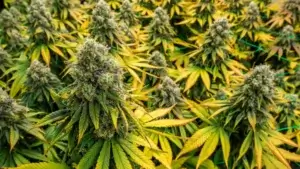Definition:
A small, teardrop-shaped structure on the cannabis plant that forms the base of the flower, housing the reproductive organs and trichomes that contain cannabinoids and terpenes.
Purpose and Usage:
The calyx is a critical part of cannabis flower anatomy, as it is the primary location of trichomes, which produce the plant’s therapeutic and psychoactive compounds. In cultivation and harvesting, identifying healthy calyxes helps growers determine bud quality and maturity.
How It Relates to Cannabis:
Calyxes play several roles in cannabis development:
- Structure Formation: Calyxes combine to form the main structure of the bud, where the highest concentration of trichomes is found.
- Protection of Reproductive Organs: Calyxes protect the pistils and other reproductive parts of the plant, crucial in the pollination and seed formation process.
- Trichome Production: Trichomes develop densely on calyxes, making them the most potent parts of the plant in terms of cannabinoids and terpenes.
- Maturity Indicators: The appearance of calyxes (color, shape, and trichome coverage) helps growers assess when the plant is ready for harvest.
Common Misconceptions:
- “Calyx and bud are the same”: While calyxes are part of the bud, they refer specifically to the small structures that make up the flower, rather than the entire bud itself.
- “Calyx only exists in female plants”: Male cannabis plants also have calyxes, though they are less developed and lack the high trichome density found in female plants.
- “All calyxes contain seeds”: Calyxes only contain seeds if the female plant has been pollinated; otherwise, they remain seedless and are valued for their cannabinoid-rich trichomes.
Alternatives:
- Flower Bract: Another term for calyx, emphasizing its role in flower anatomy and trichome production.
Importance of Calyx:
Calyxes are essential to cannabis cultivation and consumption because they contain the majority of the plant’s psychoactive and medicinal compounds. Understanding calyx development aids growers in optimizing bud quality and potency, directly impacting the final product’s efficacy and flavor.





